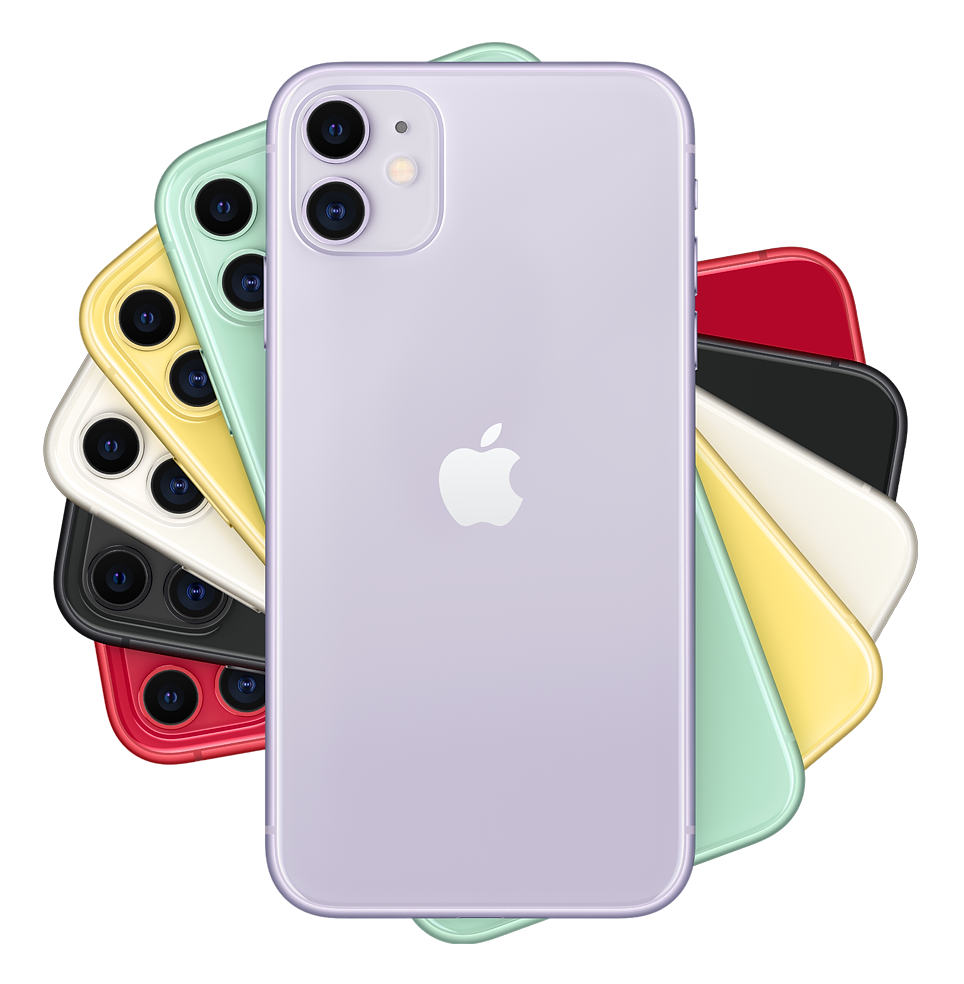iPhone 11 Review: 6 Months Later
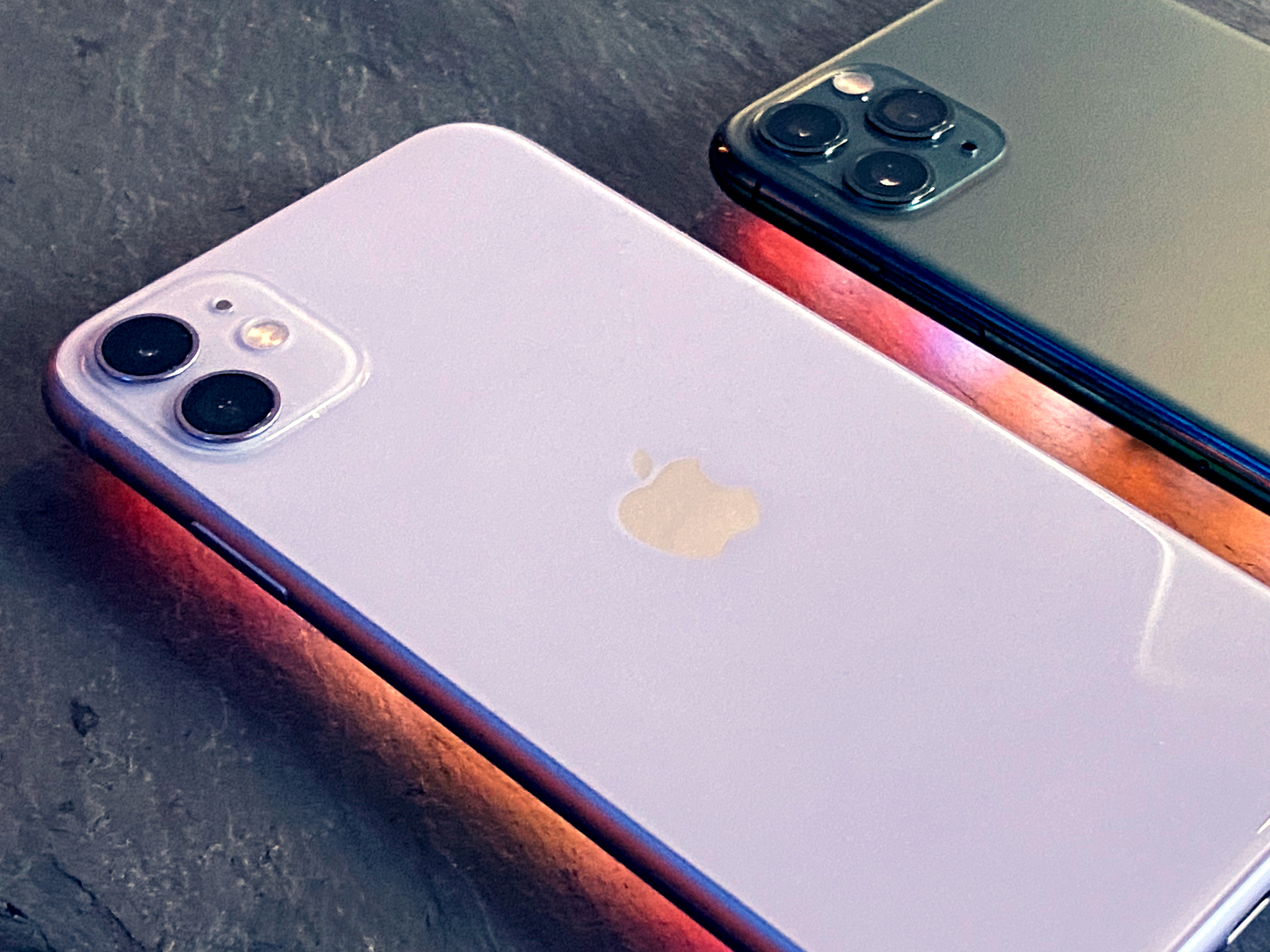
The iPhone 11 and iPhone 11 Pro were really well-received when they first came out, with many reviewers praising the cameras, battery life, and the lower price on the base model 11.
There were also some criticisms though. Namely, the lack of faster-charging options and accessories, USB-C still MIA, and just how buggy iOS 13 was at launch.
But, times change. Hardware gets worn. Software gets updated. New competition comes out. Expectations change. And so do circumstances, especially right now when many of us are rightfully stuck at home and depending on our phones in very different ways than we'd planned to. It makes the whole question of what to buy and when to buy it just alternate reality different than it was at launch.
So, how are the iPhone 11 and iPhone 11 Pro doing... 6 months later?
iPhone 11 6-Months Later: Durability
Apple's overall build quality is still among the best in the industry. It's why you see so many old iPhones still in service, 3, 4, 5 or more years on. They're built like little metal and glass bricks.
This year, I like that Apple has used that top-of-the-line glass front and back on the iPhone 11 as well as the iPhone 11 Pro because last time the iPhone XR didn't get quite as good as the iPhone XS on the back.
Honestly, though, the glass has been a mixed bag for me. I've said this before, but I don't baby review units. I want to see how resilient they are. So, I throw them in my pocket with keys, wallets, or when I'm doing a lot of testing, with other phones with big gnarly camera bumps on the back. Literally the worst things.
iMore offers spot-on advice and guidance from our team of experts, with decades of Apple device experience to lean on. Learn more with iMore!
And… I've gotten a lot of scuffs and scratches. I can't see them at all when the display is lit up. Which is great, because it means it doesn't affect my usage at all. If it did, I'd probably start babying them immediately. When when the display is dark and the light hits them just right, it's like an attack. And that will affect resale value. So, if you typically sell your old phone to buy your new one, you'll want to look into a screen protector.
I've heard anecdotally that the characteristics of ion-exchange glass chemistry can be biased more towards scratch resistance or shatter resistance. In other words, different formulations perform better in one way than the other, never both.
If that's accurate, this generation definitely feels biased more towards shatter resistance, at least to me. And I say that as someone who's dropped both the iPhone 11 and iPhone 11 Pro a bunch of times — never on purpose — and both are totally fine. Not a crack on them.
So, now that Apple's done so well with the shatter, I'd love to see them figure out the scratch. Even if it means a sapphire option on the higher end, like the Watch has.
Because people like me, we need it.
Especially since the iPhones are still so damn slippery. We've had glossy finishes, we've had frosted finishes, but they've all been, well, not zero-friction like the Galaxy Flip, but close. A good number of the drops I've had have been because of slips. So, the more Apple can iterate on the finishes to fix that, the better.
I've said I'd be willing to take a camera bump on a MacBook if it meant getting a really good camera there, so I'm not going to begrudge the massive units on the iPhones 11. Especially now that Google went with something similar and Samsung basically said hold my case of beers.
iPhone 11 6-Months Later: Display
Both the LCD display on the iPhone 11 and OLED display on the iPhone 11 Pro remain terrific. I personally prefer the OLED because I'm a sucker for HDR video, and Apple's display team has just done such a terrific job on extending the dynamic range while still mitigating color shift and burn-in. Problems that have plagued a lot of other OLED phones over the years.
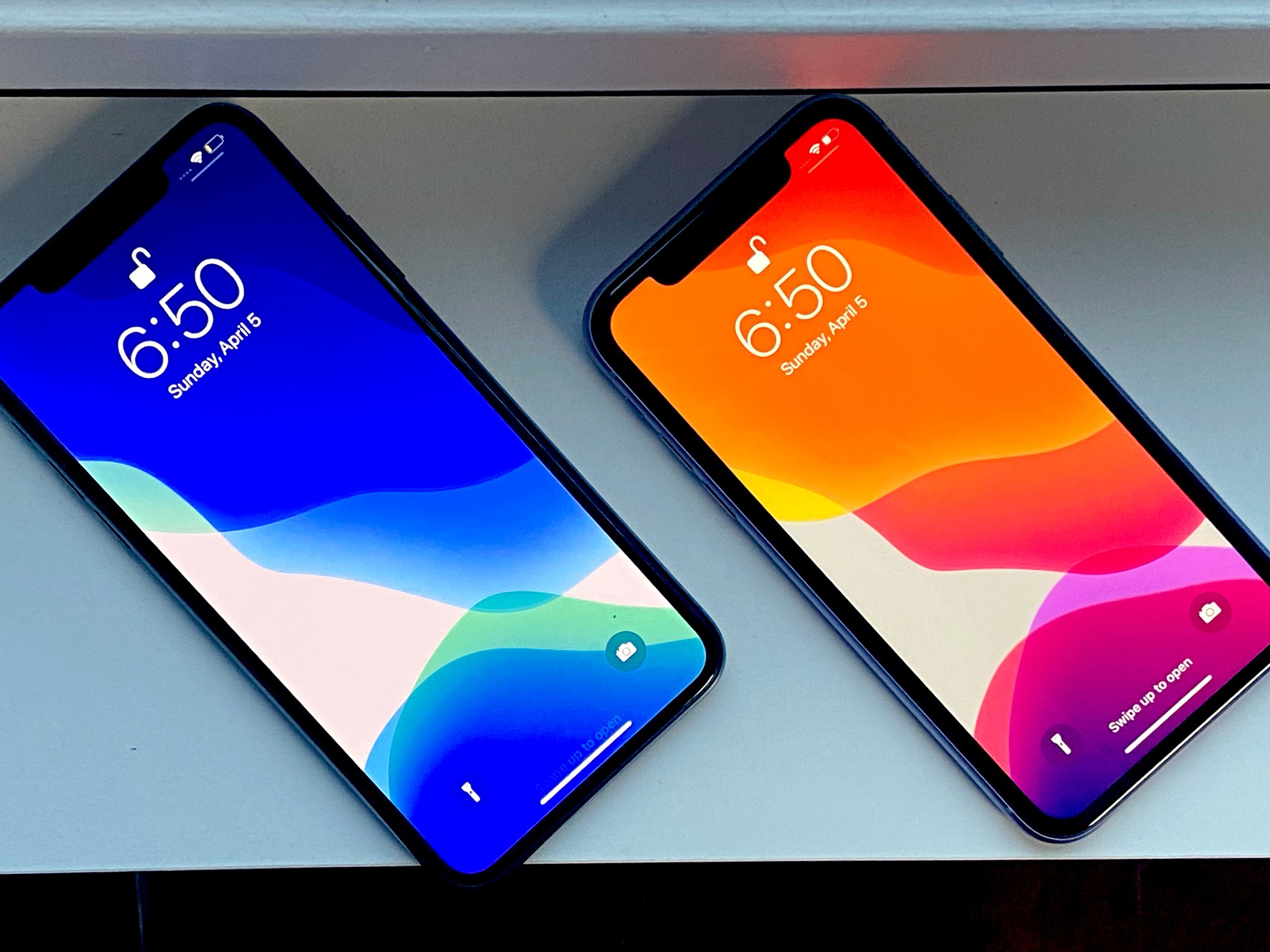
It's something I've come to really appreciate much more lately because, stuck at home as many of are right now, it lets me watch all the glorious high bit-rate HDR content Disney+, Apple TV+, and even Netflix have been pumping out over the last 6 months pretty much anywhere around the house, even out on the balcony.
But I'm a nerd who appreciates that stuff. Apple's truly excellent color calibration and color management make the LCD displays look eerily close to identical, so close it's hard to tell them apart unless you're comparing them side-by-side which, given then differences in the technologies involved, is remarkable.
You don't get the deep blacks or peak brightness of the OLEDs, but you also don't get the color shifts and pulse-width modulations, which some people still claim really bothers them. The iPhone 11 LCD is lower resolution than the 11 Pro OLED, but the subpixels are RGB stripe, not RGGB pentile, which means it's more like an apple's … D&D dice comparison anyway.
I, long ago, debunked a lot of the dumb hot takes around 'OMG not even 1080p', but it's true some people claim they can see the aliasing and don't like watching upscaled 720p or downscaled 1080p video on their phone. Of course, other people claimed they could see the flicker and didn't like @3x UI downscaling on their 1080p iPhones Plus either. Ultimately it's about balancing costs and power efficiencies again the limits and quirks of human vision.
And, right now, with everything that's going on, most streaming services are reducing bit-rates and YouTube is defaulting to 480p anyway,
They're also still 60 Hz, not 120 Hz ProMotion like the iPads Pro have been since 2017 and an increasing amount of Android phones have been going over the last year.
I've been using a Pixel 4 at 90 Hz for the last 6 months, as well, and I really like it, though the implementation is a little uncanny compared to the iPad Pro. The Pixel also futzes in and out depending on ambient brightness, unless you manually force it on, and Samsung degrades resolution when you enable high frame rate, probably for power efficiency reasons. Which makes it easy to see why Apple didn't do it with the iPhones 11.
So, for me, HFR is like HDR. Nerds like me are just never going to want to go back but most other people won't care if they even notice.
iPhone 11 6-Months Later: Haptics
I still miss good, proper 3D Touch. I get that removing it saved some cost and some space, and let Apple not only fill up on battery but provide consistency between long-press and force press, and across devices like the iPhone and iPad.
And… Haptic Touch has gotten more capable. But, it's still cognitively slower than 3D Touch, because you're left waiting for the long instead of busy creating the force, and it's still missing things like an easy way to toggle between cursor placement and text insertion on the iPhone keyboard.
Maybe Apple could do something like what Google's just done on Android: Use machine learning to try and guess force based on deformation during touch events. In other words, speed up Haptic Touch response by how fast and how much your fingertip flattens out against the glass.
Basically anything to make Haptic Touch as quick and physically gratifying as 3D Touch was.
iPhone 11 6-Months Later: Cameras
Both the iPhone 11 and iPhone 11 Pro have Apple's latest, top-of-the-line 12MP wide-angle as the main camera. And … pretty much everyone agrees it's one of the best still cameras on a phone and arguably still the best video camera period.
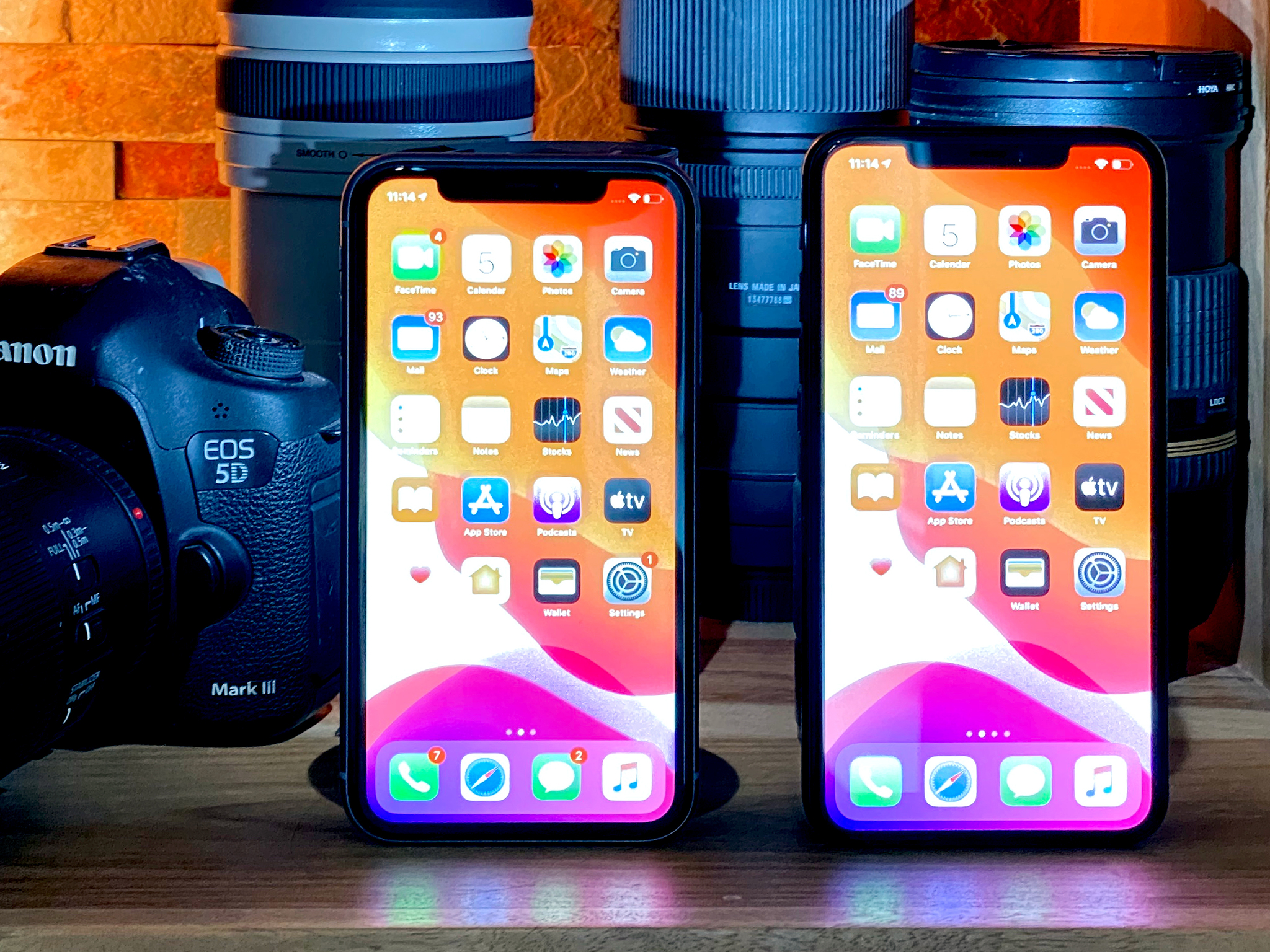
Google's latest Pixel 4, which I've also been shooting with for the last 5 months or so, can capture better stills in some circumstances, has better segmentation masking for portrait mode, and just creams the iPhone at digital zoom — something I really hope Apple addresses with iOS 14 if not the next iPhone later this year.
But all the Pixel photos look like Pixel photos. Cool. Contrasty. Like the machine learning baselines everything to that specific look so it can make them so consistent and so optimal in that look. And … it's often a little cool and monotonous for my tastes. Though, obviously others disagree.
The iPhone 11 is still using better camera hardware, better optics, and combining them with the machine stuff like Smart HDR in bright conditions, Deep Fusion indoors and in the mid-range, and Night Mode when it's dark, but in all cases it's letting the photo be the photo. Sometimes, that's worse. Other times, that's quirkier. Yet others, it's freaking brilliant, as you'd expect from a real camera.
Every once in awhile there can be some weird artifacts, though, and recent software updates haven't really mitigated that for me.
Samsung and Huawei, meanwhile, are using far more massive camera systems now, with exponentially more megapixels, and binning them down to try and get an average that's better than the sum of the parts. They're also using periscopes so width can be used instead of depth to shove much better telephotos into phones.
But, their color science and machine learning just aren't there yet. I know some of that is personal or regional taste and preference, but I also think it highlights that cameras aren't just big glass anymore. They're increasingly big compute.
Personally, I'd love to see what Apple could do with more megapixels and pixel binning options at their disposal. For a long time, 12MP was just the best balance of quantity and quality. The best trade-off. Now, bigger, with these new sensor advances, bigger finally has the potential to also be better.
And, yeah, I'd love to see what Apple could do with a better telephoto as well. In normal times, not these times, you want to be able to take photos of your pets running around the park or your kids on the field of a game and have them look like your pets and your kids. Nothing goofy and unusable like 100x, but just really solid 10-30x. It's one of those basics of real-world camera work left for Apple to conquer.
Night Mode, new to the iPhones 11, has turned out better than I expected. Coming from nowhere, Apple caught up with Google, who was best in the industry just the year before. It doesn't just amp up the exposure and then noise reduce everything. It keeps night looking like dark, moody night. It just lights up the subjects.
I still think Google tends to nail people better, except for some times when it's still too cool, and it isn't as troubled by reflection through windows. Especially on planes. Remember those? But Apple often nails scenes and landscapes better, except for some times when Google's coolness pays off.
I like that it's automatic but I do wish you could force it on and that it was faster to force off, just to sometimes get those edge-case photos I really want.
The iPhone 11 literally one-ups the iPhone XR with a second camera. Not the telephoto like the old iPhones Plus, but a 120º ultra-wide angle.
Optically, it's nowhere nearly as good as the wide-angle. F/2.4 instead of f/1.8, so it can't drink in as much light and is therefore prone to more noise, 4 element lens instead of 5, so it's not quite as molecular tac sharp, no Focus Pixels instead of 100% Focus Pixels so, I think, it's relying on the main camera for phase detection, and because it's so wide, it elongates objects closer to the edges. Not to the point of fish-eye, but maybe like amphibian-eye?
That's just physics being a jerk when it comes to phone cameras still being relatively flat. Outside — remember outside? — with decent light, none of that really matters. Inside, though, you do hit the limitations.
Not all of them though. On other phones, the ultra-wide would often look completely different than the standard wide. Not just physically, but the exposure, the color, all of it.
Apps like DoubleTake, which shoot with multiple angles at the same time and lets you combine or switch between them without them looking all janky, really show off how well the camera fusion works at keeping things consistent. It's also, I think, what makes them useful for mainstream media production, whether it's just a few shots in a film or the whole film. Similar to how so many pro photographers seem to swear by the iPhone — quality, consistency, and just a killer app ecosystem because of the quality and consistency.
I also really like Apple's 1x, 2x, and new 0.5x buttons, which in most cases let you instantly zoom in or out much more elegantly than trying to manually spin a dial interface. Though you can do that on the iPhones 11 as well. When I'm shooting, I often just want zoom in or zoom out, and not the cognitive load of something more granular but also fussier.
Which, yeah, makes it super weird and frustrating that the 0.5x button seems to stop working once you hit record at 4K60 and gives you the dial instead. I've been hoping that would get fixed via a software update but so far, so no joy.
Ultimately, I still think the ultra-wide-angle was a better choice than the telephoto for the iPhone 11 though. Most of the time, I can sneaker zoom to get closer. Sometimes, especially in lower light, the camera actually uses the main wide-angle for telephoto anyway, because it's still pulling in that same data. You can't always go back far enough to capture an ultra-wide angle, especially indoors, where many of us are stuck these days.
If you're just taking photos in or of your house, you can show the whole room. If you're making TikTok videos, you can show way more of the background or even fit in more of your family. Or, you know, in better times, your friends.
It's just a far more fun and flexible camera choice. Not something most people will use every day — here are the results of my incredibly scientifically inaccurate Twitter poll on it — but an option you just can't get any other way.
I also like that the selfie cameras are better and slightly wider now. Especially since I'm doing more video calls than basically ever. I wish the Mac cameras were anywhere nearly this good, or there was a mode that just let you use your iPhone camera for Mac calls. As it is, I'm using my iPhone more than ever and the quality is terrific.
Slowfies, I mean, I'm glad slow motion is there. It should be everywhere. But I don't have the long hair to really show it off. If anything, I have shelter-in-place hair. I'm willing to bet a bunch of people on Insta or TikTok have found far more creative uses for it.
Overall, Apple's using a lot of computational technology, from semantic rendering to optimize different subjects and parts of subjects in a scene, to multi-scale tone-mapping so not all exposure is treated the same, and it's fixed a lot of the odd texture and tone issues of the previous Smart HDR system.
Some people might argue that most of this doesn't matter. That many of us are shooting for social media these days, which destroys the quality of our images and video, and makes $200 cameras with crushed blacks and boosted sat look as appealing, if not more appealing, than $1000 color-accurate cameras on Twitter and Instagram.
There's some real truth to that. But those services are, slowly, so agonizingly slowly, beginning to introduce higher quality image support, and more importantly, for many of us, these are the only cameras we're using and, a few years or a decade from now, when we look back at the photos and videos we've taken of our families, our children, our pets, our travels, ourselves, we're going to want those to be the best possible photos and videos they can be.
iPhone 11 6-Months Later: Battery Life
The A13 Bionic system-on-a-chip that Apple packaged into both iPhones 11 is still just massively over-powered. The A12Z in the latest iPad Pro makes many a PC and Mac cry itself to sleep mode and this is still next-level to that.
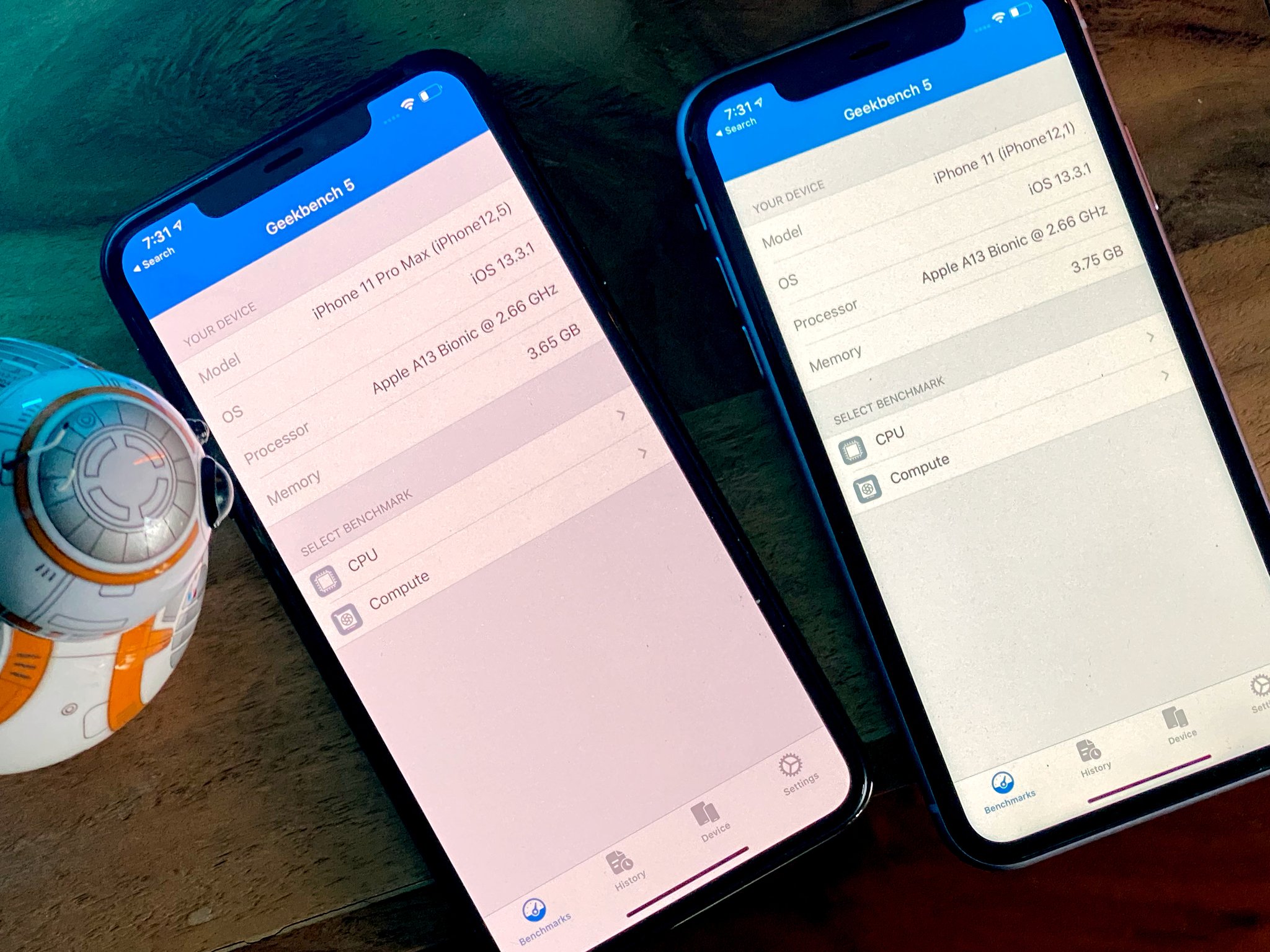
I've yet to really peg it this side of massive AR scenes and it even handles complex photo filters and simpler AR scenes with ease. And those are things that could peg the As 11 and 12.
And that's fine. Apple's on record saying they're not building chipsets for current performance. They're building them to maintain performance two or three or even four or more years out, and the versions of iOS and apps that will require it.
It's also great Apple is putting that chip in not just the iPhone 11 Pro but the regular iPhone 11 as well. With PCs, it's almost expected that cheaper builds will have worse processors. A lot of phone companies put older or lower performance chips into less expensive phones. Apple also uses very different chips in its Pro Macs vs. its standard line.
It makes me think that iPhone Premium, while a far worse marketing name, would be a far more accurate name for how Apple is segmenting the lineup. Or maybe even Edition like on the Watches.
Because in almost every way that really matters, from main camera to processor, you're getting a first-class experience with both the iPhone 11 and iPhone 11 Pro.
I do wish there was either more RAM, like the most recent iPads, or better app hibernation. Actually, both.
Most times, everything is fine. But if you're switching between really heavy apps, like Pokemon Go and Safari and Camera, other apps will just jettison from memory left or right, then have to relaunch or reload completely when you come back. Like pre-iOS 4 days.
I get server-side and graphically intense stuff is complicated, but at least preserve the previous state and give me the impression it's still running, let my character run around or let me read the already rendered web page, and then reload and update in the background.
I don't need the ability to pin apps in memory. That feels very much like having a mechanic ride around in the car with you. I just need something that better handles the much higher demands apps are putting on the system these days.
Mostly, because I don't want to adversely affect the much-improved battery life.
The iPhone XR was already a beast compared to the XS. Now the entire iPhone 11 lineup just straight up out-performs.
I've run all of them, 11, Pro, and Max, right down during Pokémon GO events. And yeah, that remains my favorite way to releave stress and load test battery life on phones. And they've all lasted just hours and hours, even with constant display at full brightness, GPS, data, graphics rendering, everything.
Battery health on the 11 and 11 Pro Max is still at 100%. The 11 Pro, which I use roughly twice as much as the other two, is at 98%. And that's after daily abuse.
Some of the new battery life comes from the increased processor and display efficiency, some just comes from battery. And I hope it keeps coming. Staying at home all day, you'd think plugs and pads would be plentiful, and I'd always be topping up, but I just really never want to have to worry or think about that. So, the more longer it lasts between any charges, the better.
When I do charge, the new USB-C cord and adapter are aces. So much so, I really wish Apple would include it with the iPhone 11 as well, not just the 11 Pro-as-in-premium.
iPhone 11 6-Months Later: iOS 13
Apple has also pushed out a ton of software updates for the iPhone. We're at iOS 13.4 already when some years don't go much past .2. And, frankly, it was necessary.
Where iOS 12 was one of the most stable releases I can remember in a long time, from beta to final bug fix, iOS 13 was a hot mess in beta and not much better at launch.
It's better now, though. There are still some bugs, old and new, but for the most part, it's finally smooth and solid. And, in the meantime, Apple's delivered new features like deep fusion for more detailed photos in indoor lighting and, new emoji and Memoji, because those are the features a lot of people actually care about, and cursor support for the iPad.
Which… I kinda wish we had on the iPhone too. Especially because the iPhone is so overpowered but so screen constrained. A cursor and a mouse, especially with AirPlay, could unlock a lot of utility for people, even and especially at home.
Same with multi-windowing and picture-in-picture. I know Apple wants to keep things simple on the small display, but I so often wish I could take notes while surfing the web, type messages while watching a video, all that stuff.
I know Android does this. The operating systems started off on opposite ends of the spectrum but are converging on a similar feature and interface set, they just have very different points of view that are very differently problematic.
And this one I think Apple could do well.
iPhone 11 6-Months Later: Conclusion
I asked all of you on Twitter what you thought about the iPhone 11, 6 months later, and a ton of you responded with pretty much exactly what I went over here: Great camera. Great battery. And for the baseline model, great price.
https://twitter.com/reneritchie/status/1245538458678046722
Hell, in an age where Samsung has blown well past the $1000 mark for their latest flagships, never mind the foldables, which are fun, but as resilient as paper doilies, even the iPhone 11 Pro doesn't look quite so stratospherically expensive anymore.
I've been saying for a long time now it isn't about price, it's about value, and with the iPhone 11 models, Apple's just delivering a ton of value. Especially when you factor in all the free software — really free, not just free as in our privacy and data — that comes with them.
Normally, 6 months later, I'd throw in some caution as well: that new models would be arriving like clockwork in just another 6 months. And, while we might get a new, lower-cost Home button iPhone update soon, there's just no way to tell when or how anything else will play out this year, even with Apple's typically rock-solid release schedule.
So, I'll just remind you again, that while the tech universe is obsessed with year-over-year upgrades, unless you're on an annual plan, most people just don't think that way. Most people keep a phone for two, increasingly three or four years, and typically only upgrade when they have to.
But, having new iPhones every year means any year you choose to upgrade guarantees you'll get the best iPhone possible for that year. One that can see you through another two, three, four years.
And that's exactly the case here. If you have an iPhone 6 or 6s, an iPhone 7, even 8, then the iPhone 11 remains an absolutely terrific update. And, since iPhones keep their value better than pretty much any other phone in the industry, whether you're trading in, handing down, or selling so you can trade up, you can likely save some cash not only on your next iPhone, but by rinse and repeating the same process with every iPhone you get.
Especially if you want or need that new iPhone now because of work from home or just being stuck at home.
The cameras are great for getting creative indoors even when you can't go out, the battery life lasts all day, even at your kitchen counter or on the sofa, and the price, especially for the iPhone 11 proper, is just all shades of right.

Rene Ritchie is one of the most respected Apple analysts in the business, reaching a combined audience of over 40 million readers a month. His YouTube channel, Vector, has over 90 thousand subscribers and 14 million views and his podcasts, including Debug, have been downloaded over 20 million times. He also regularly co-hosts MacBreak Weekly for the TWiT network and co-hosted CES Live! and Talk Mobile. Based in Montreal, Rene is a former director of product marketing, web developer, and graphic designer. He's authored several books and appeared on numerous television and radio segments to discuss Apple and the technology industry. When not working, he likes to cook, grapple, and spend time with his friends and family.
